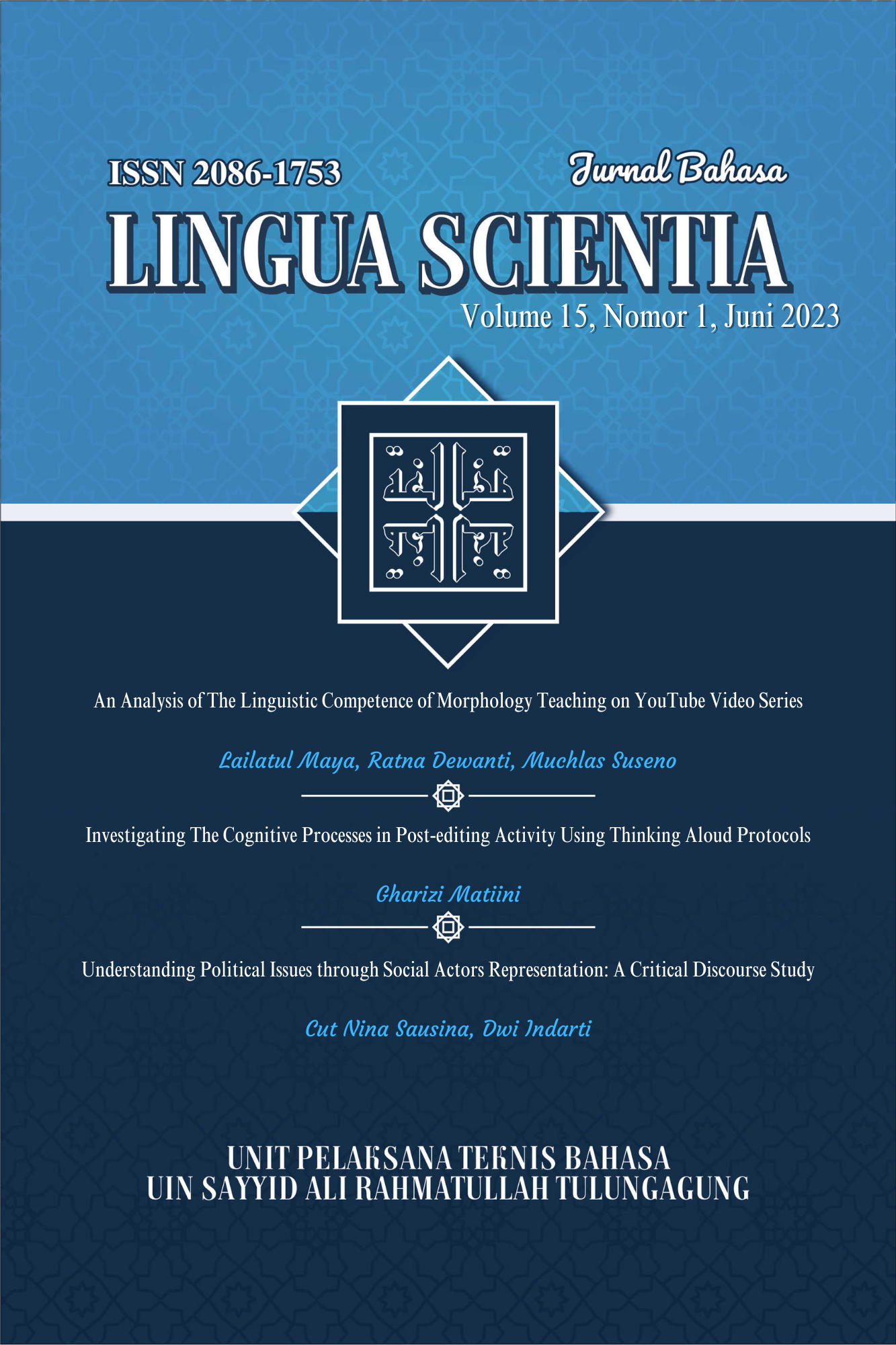UNDERSTANDING POLITICAL ISSUES THROUGH SOCIAL ACTORS REPRESENTATION:
A CRITICAL DISCOURSE STUDY
Abstract
Critical Discourse Analysis attempts to investigate social, political, historical and environmental issues by analyzing linguistic aspects and resources. This paper aims to examine the strategies used by journalists of tempo.co and CNN Indonesia in delivering the Governor of NTT’s school policy. Two research questions are formulated: (1) How the social actors are described in the news of Governor NTT’s policy publish in tempo.co and cnnindonesia.com. (2) What strategies used by tempo.co and cnnindonesia.com in describing the social actors of Governor NTT’s policy news. The results of the study indicate that the social actors are described in the news of Governor NTT’s policy publish in tempo.co and cnnindonesia.com by clearly mentioned the actors who responsible for the entry school policy. This educates the readers about the policy. Even though the actors are clearly mentioned, there is no tendency to marginalize them, especially Governor of NTT. By covering all person in charge, the readers are presented proportional news. Strategies used by tempo.co and cnnindonesia.com in describing the social actors of Governor NTT’s policy news is only inclusion strategy. Meanwhile, exclusion strategy is not detected in both news by tempo.co and CNN Indonesia.
Downloads
References
Eriyanto. (2002). Analisis Wacana: Pengantar Analisis Teks Media. LKIS.
Evayani, W., & Rido, A. (2019). Representation of social actors in sexual violence issue in The New York Times and The Jakarta Post newspaper: A critical discourse analysis. TEKNOSASTIK, 17(2), 43–55.
Evianda, E., Ramli., Harun, M. (2019). Critical discourse analysis on women’s position in Prohaba Daily News texts. Studies in English Language and Education, 6(2), 273–285.
Fairclough, N. (1992). Discourse and Social Change. Polity Press.
Fairclough, N. (2003). Analyzing discourse: Textual analysis for social research. Routledge.
Fitriani, S.S., Ananda, R., Irawan, A. M., Samad, I. A., & Weda, S. (2021). Representation of 212 rallies in the Jakarta Post articles: A hybridity of CDA and SFL analysis. Studies in English Language and Education, 8(1), 328–345.
Gunawan, F., Kuraedah, St., Amir, A.M., Ubaidillah, M. F., & Boulahnane, S. (2023). Transitivity and critical discourse analysis on a testament: A woman’s involvement in Jihad. Studies in English Language and Education, 10(1), 517–536.
Halliday, M.A.K., & Matthiessen, C. M. I. . (2004). An introduction to functional grammar (3rd ed.). Hodder Arnold.
Leeuwen, T. V. (2008). Discourse and Practice: New Tools for Critical Discourse Analysis. Oxford University Press.
Mills, S. (1992). Knowing your place: A marxist feminist stylistic analysis. In M. Toolan (Ed.), Language, text, and context: Essays in stylistics (pp. 182–207). Routledge.
Moleong, L. J. (2007). Metodologi Penelitian Kualitatif. Rosdakarya.
Xie, Q. (2018). Critical discourse analysis of news discourse. Theory and Practice in Language Studies, 8(4), 399–403.
Zhongdang, P., & Gerald, M. K. (1993). Framing analysis: An approach to news discourse. Political Communication, 10(1), 55–75.
Copyright (c) 2023 Cut Nina Sausina, Dwi Indarti

This work is licensed under a Creative Commons Attribution-NonCommercial 4.0 International License.
Before going to review process, all manuscripts will be checked that they are free from plagiarism practice using "Turnitin" software. If there is an indication of plagiarism, the manuscript will instantly be rejected.


